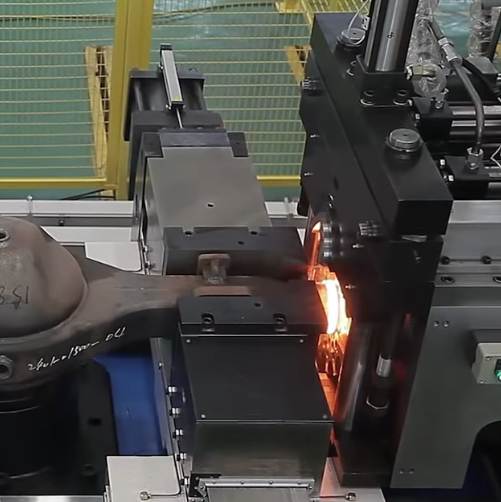We’re not sure why the Chinese company making this video decided to use this music, but they did and we laughed while listening to it and watching these big floater axle housing ends getting friction welded to the housing. The machinery involved here is some pretty spectacular stuff. We’re talking two high speed “lathes” with incredibly precise movements, and a housing being held perfectly centered between them. If you watch the video you can see the lathes lining up and then spinning up to speed. After that they ease up to the housing and just touch it with the now rotating housing ends. When they really start building some heat together the lathes begin moving closer and closer to each other so that the molten material can be forced together to create a weld “bead”. Watch closely at how smoothly and precisely they move together in order to create the perfect weld on both ends.
At the end of the video you’ll also see the cutaway view of one of these welds and also some other ends that have been cut off for analysis. This is some pretty thorough welding, and a process that is gaining traction in other automotive applications. In fact, some later model driveshafts on Fords had the ends friction welded I found out recently. It looks a little weird, but it is hard to argue with the absolutely symmetrical heating and welding of the material. It’s cool and different, that’s for sure.






















Would think”Hot Blooded” by Foreigner or “Hot for the Teacher” by Van Halen would be a better choice. 🙂
pratt whitney aircraft develop inertia bond for the helicopter blades to the rotor way back in the 60’s. nothing new here for me.
Or…it was earlier developed in the Soviet Union in the fifties. But that and friction-stir are coming into their own w/ equipment available now.
The precision and force demonstrated are impressive stuff.
I had the sound off.
A large percentage of automotive and diesel valves have been friction welded from two pieces for decades. Lets them use a different alloy for the head and the stem – one optimized for high heat and impact loads, the other for friction wear and stretch/elongation type loads.